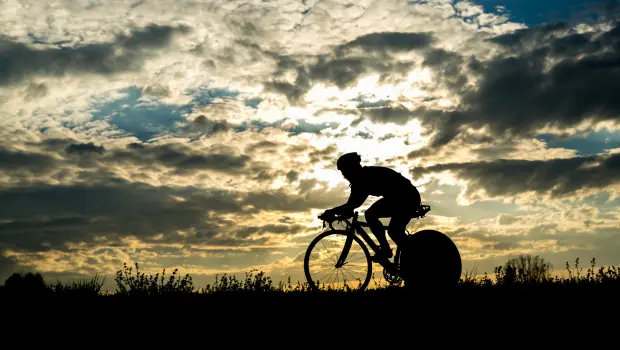
Every coach, magazine and "athlete expert" has their own version of the top training mistakes to avoid. Here below is my pragmatic view based on my own mistakes over the past 30 years, as well as my experience as a sport-endurance coach over the past 10 years.
This list is not meant to be exhaustive and each point below could be an entire topic by itself. My goal is not to give you a complete playbook of what to do, when to do it and how to do it, but rather to make you aware of what you may or may not be doing properly today and adjust it.
1. Lack of training periodization
Not building a base level of foundational fitness and starting a race-specific training program too soon is like building a house on sand or on an unstable foundation. Similarly, doing a "bit of everything" all year long, instead of following specific training phases based on your level of fitness, your racing calendar and the types of races that you will be competing in, will only provide very limited benefits and fitness improvements.
More: Four Drills to Improve Your Cycling at Any Age
2. Training too hard, all the time
Many athletes feel that every time they train, it should feel hard. If it does not feel hard, there are no fitness benefits. As a result, most of their workouts fall into the same "somewhat hard" category. In reality, this type of workout should for the most part be avoided, especially when the level of effort is not properly calibrated. These "somewhat hard" workouts provide a very low return (fitness improvements) on your training time investment.
At a minimum, know your heart rate training zones and use them to calibrate your workouts and intensity levels. Keep in mind that your heart rate zones are sport specific. This means that your swimming, biking and running zones will be different. Work with a coach or visit a qualified lab to get your training zones established. Ideally, train with biking power zones, and swimming and running pace zones as well.
3. Never training easy enough
Following the point above, many athletes fail to train at lower intensities. By lower intensities, I mean 75 to 80 percent of maximum heart rate, or about 85 percent of lactate threshold heart rate. Training at lower intensities brings many physiological benefits, including:
- An increase in mitochondria density, which increases energy storage and production within muscle cells
- An increase in capillary density, which allows more blood to be transported to the working muscles and waste (lactate) to be carried away
- Further developing the stroke volume of the heart, which in turns leads to a higher cardiac output
- Metabolizing fat as a primary source of fuel, which is essential when training for long-distance races
These low-intensity workouts don't have to be boring. They can easily be combined with form and drill workouts across all three triathlon disciplines, such as single-leg drills, which can be done inside on a trainer. It's an excellent way to maximize your time spent training by accomplishing more than one goal at a time.
4. Never training hard enough
Unless you have been working with a coach, chances are that you have never trained hard enough, in a well-planned and structured way. High-intensity training, that is VO2 max and anaerobic capacity workouts, even neuromuscular power workouts in some instances, is critical to achieve performance improvements. These are short, fast, highly effective and fun interval training workouts that must be carefully and adequately scheduled. They are the best bang for your buck!
More: Swimming: It's all About the Core
Keep in mind that heart rate becomes somewhat irrelevant when training at these intensities. The reason is simple: when intervals are short, like repeats of 60 seconds at VO2 max, or 30 seconds at anaerobic capacity, well-trained athletes' heart rates won't reach VO2 max and anaerobic capacity levels due to the short duration of the intervals. Instead, swimming and running pace zones and bike power zones should be used as they will be much more representative of the targeted intensity levels to be reached.

